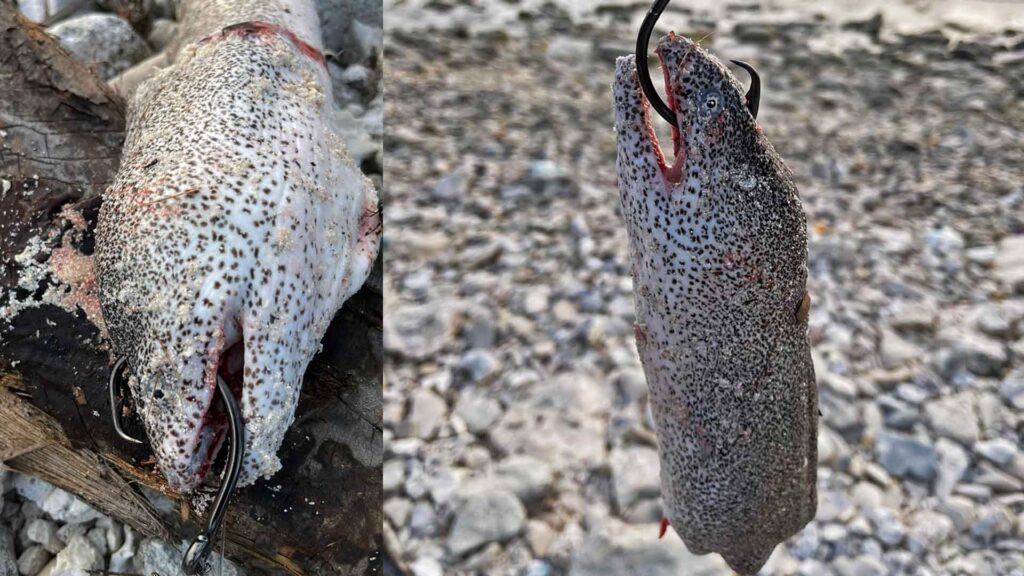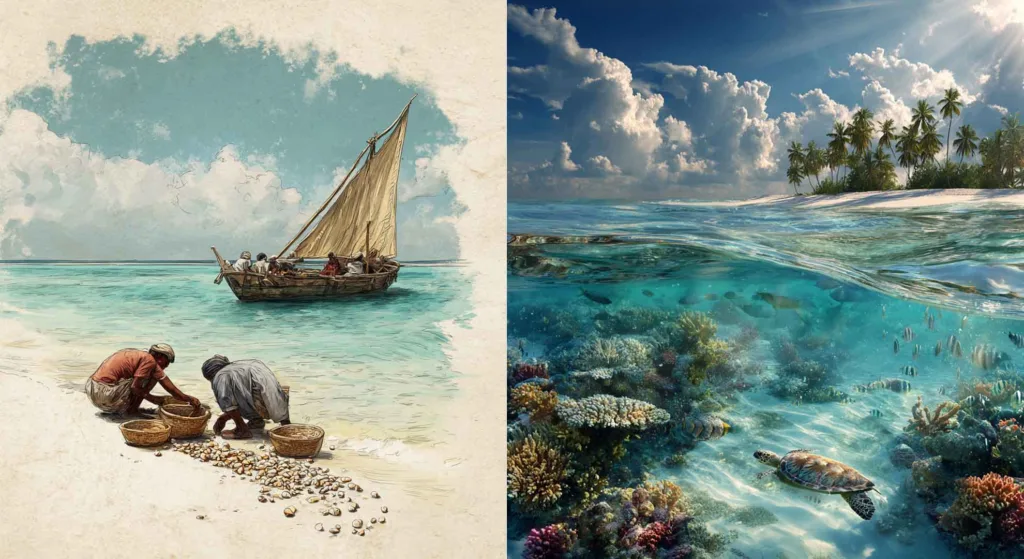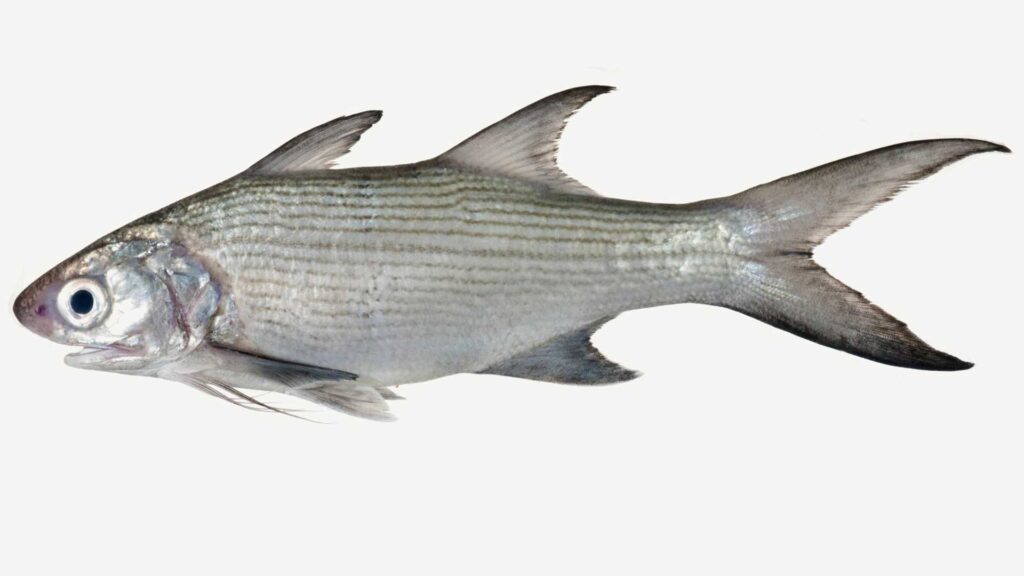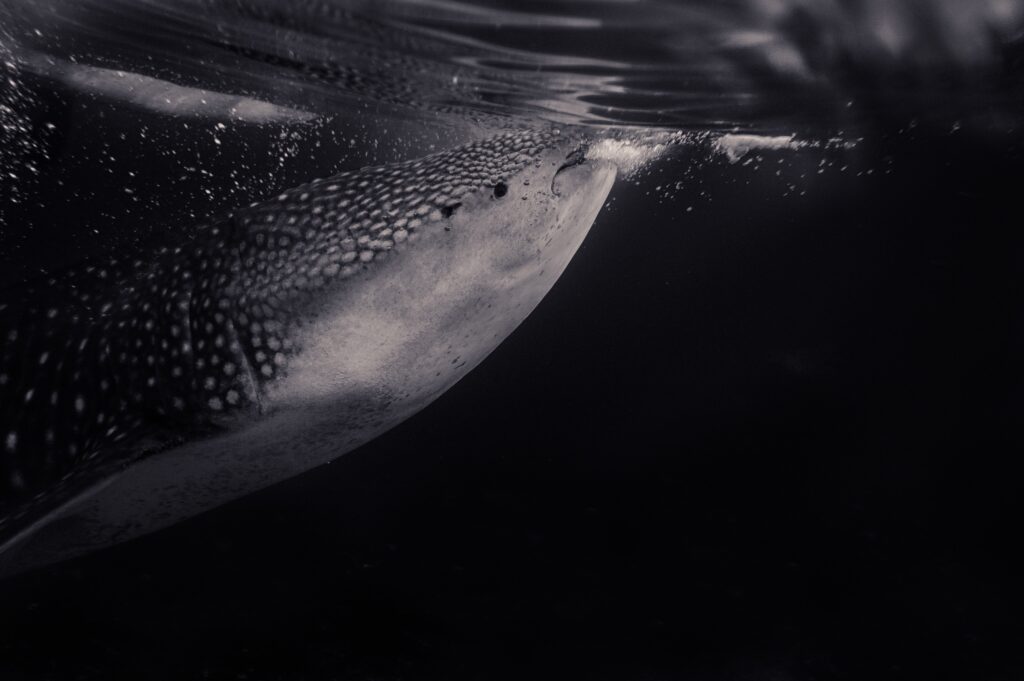
Our exotic islands are right in the middle of the Indian Ocean, entirely made of coral reefs, with pristine lagoons and amazing white sandy beaches. Fishing in Maldives is endowed with varieties of unique species of fish such as groupers, tuna, emperors, dolphin fish, barracuda, squirrelfish, rainbow runner and lots of other types of exotic fish. You only need a fishing line or a dhoni to witness this excitement. You may even be able to fish with a line off the shore of the beautiful tiny islands.
One of the most interesting methods of fishing that I have ever experienced is medun. This method of fishing involves a monofilament of 500 lb fishing hand line with a big hook (normally no 1 or no 0) attached at the end of the line. There will be around three feet of stainless-steel wire connected in between the monofilament and the hook. A strong thin rope is attached to the rear end of the monofilament and the rope will be knotted to a palm tree. The bait used in this method of fishing is normally dead octopus, head part of a tuna or part of an eel. I remember my great uncle – Rafeeqbe – regularly indulging in this exciting fishing method for several years.
This method starts at sunset during low tide. The projection for the catch is at high tide at night. Normally timing should be calculated in which the line should be deployed when the low tide ceases, around 5:30 pm. According to my uncle, eel is the best bait for this method. He often used rotten eels. He would catch an eel in the evening and he would keep it under a vase (runbai) for the next day.
Catching eel and preparation
We use a small hand line with a hook to catch eel. It is easy, but tricky, sometimes. The easiest way to catch an eel is to dump fish wastes on to the beach, on to the flat reef or house reef during low tide. As the wastes are dumped, the eels come out of the corals. The moment we see the eels, we throw the line that has the bait rigged. And when the eel completely swallows the bait, we pull the line and haul it on to the beach.
Deploying
Once the bait is ready, we prepare the strong line stretching around 300 feet. We normally cut the eel into two or three pieces so each part is around eight inches in length. Once the bait is rigged, we tie a small string at the tip of the hook and the string is then attached to a coral stone weighing around 1kg, so that the bait will stay at a fixed position when the line is deployed.
At around 5:30, one person will carry the stone and the rig to be deployed on the passage way. The bait and stone would be dropped around 60 feet away from where we would be staying on the beach. Once the fishing line is deployed, we normally tie the other end of the fishing line, the rope part, to a coconut tree. Then it is time to wait for the creatures to ascend from the deep sea. Short eats, soft drinks, areca nut, beetle leaves, dried tobacco leaves (ganesh) are available for the enthusiasts during this craving method of fishing. We wait on the beach hours and hours as if we are watching a test cricket match.
One person will always hold the strong fishing line as others will wait close to him. The predator, if it is a Giant Trevally, you just feel a violent yank as the fish tries to pull your arm out of its socket. The strike will be often dramatic. They are pure muscle. They typically charge out of the reef, grab the bait, and then charge back.
With the first strike, we have to give the predator a moment to swallow the bait so that the hook is pierced into its mouth. Most often the strike is ferocious and the creature will swim away at lighting speed sending the person holding the line into a nose dive, dragging him down along the beach, alarming the backup team to scramble to hold on to the fishing line.
And then everyone will pull the fishing line as hard as they could. Sometimes three or four of us are dragged down. It is a battle against a powerful creature. The predator will not surrender and it will try to escape into the deeper ocean dragging us down the beach. But this intense struggle will last for 30 to 60 minutes. Then it is time for us to pull with ease. We normally catch GT using this fishing technique.




